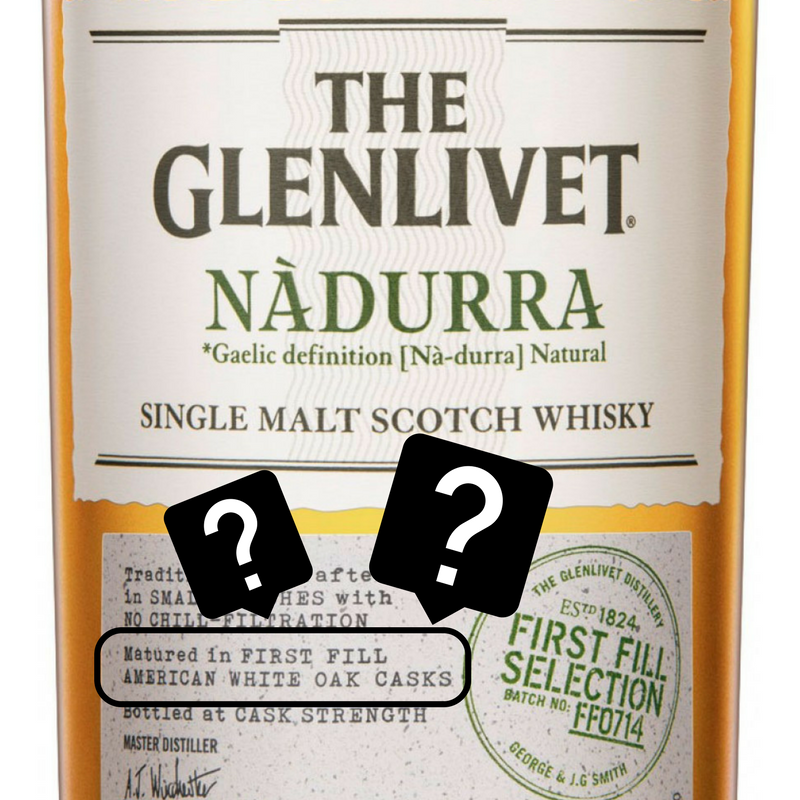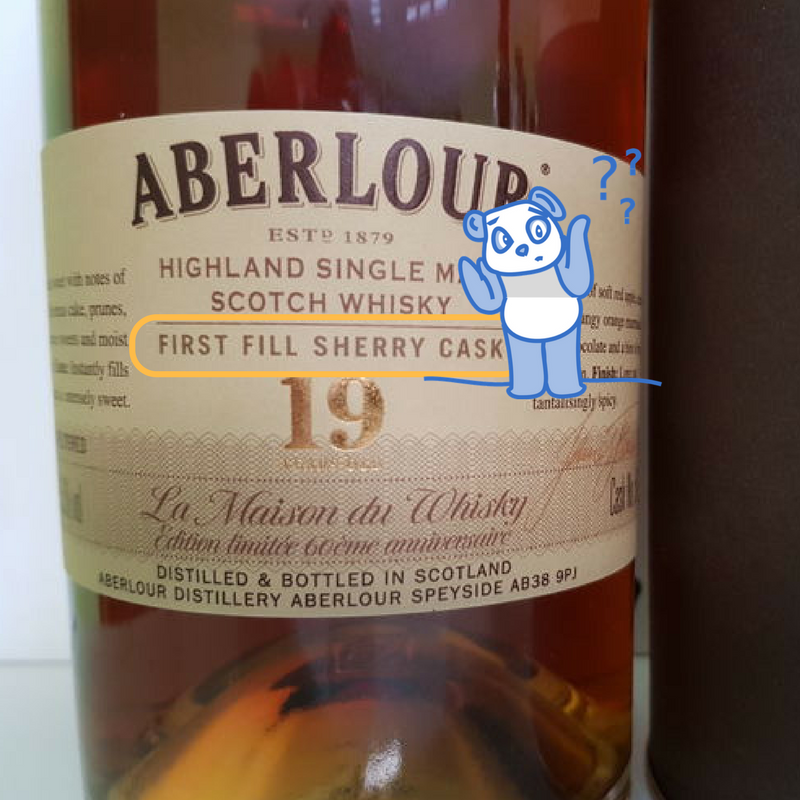LeAnne and I just got back from a trip to Scotland. As a Scotch lover, it was ten days of paradise. But don’t worry, I’m not going to plague you with pictures of our vacation. They wouldn’t do the landscape justice. Anyway, the point of me telling you this is because a question that’s resided in the back of my mind was cleared up on our trip. Sometimes you have to see something first hand before it clicks. I feel foolish that I didn’t get this simple concept until now. But I guess that’s why you travel.
The question is: Are Scotch producers using new oak barrels for aging their whiskey? I initially wondered this after seeing a bottle label like the one below.

The label says, “Matured in FIRST FILL American white oak casks.” First fill, so that means virgin oak, right? Wrong.
Now, before we go further, I’d like to point out that this is probably old news for anyone who’s from the U.K. or Europe. So if you’re from those places and laughing, first consider this. In the U.S., new oak barrels are king. In fact, virgin oak is sometimes even referred to as “first fill.” So from an American’s viewpoint, the label above would understandably be interpreted as “aged in virgin oak barrels.”
So what’s going on here?
It’s a classic misunderstanding rooted in differing perspectives. What do I mean? It’s like when you’re giving directions to a friend and you say, “go to this spot and it’ll be on the left.” And they say, “wait, your left or my left?” As Einstein would have pointed out, it’s relative.
In the U.S., first fill means new oak. In Scotland, first fill means the first time they’re filling them. See the difference?
This next label should help clarify.

“First fill sherry cask,” does not mean the barrel was built like a sherry cask but then only used for aging whiskey. Instead, it means someone aged their sherry in it and then sold it to a Scottish distillery. The first fill is because it’s the first time Aberlour used that cask.
So how does this affect flavor? It must be important, right? Otherwise, they wouldn’t bother putting it on the label.*
It is important, from a flavor perspective. Why? Because most Scotch distilleries will use their casks a maximum of three times. That equals four actual uses. By the time a barrel gets to last use, it’ll be about forty years old and have very little left to offer in terms of taste.
In practical application, it means this:
- When a barrel’s true first fill is Bourbon, you’ll get a “first fill” Scotch with more vanilla, coconut, and wood notes.
- When you have a “first fill sherry cask” Scotch, you’ll get more extensive fruit, sweet, and raisin notes.
For anyone else like me, I hope that alleviates any confusion about whether or not your Scotch was aged in virgin oak casks.
— Zac Smith
∗ When a Scotch label says, “first fill sherry cask,” they do so proudly. Sherry butts are significantly more expensive than used Bourbon barrels. Thus, first fill sherry is rarer because Scottish distillers will get as many uses as they can from their sherry barrels.


